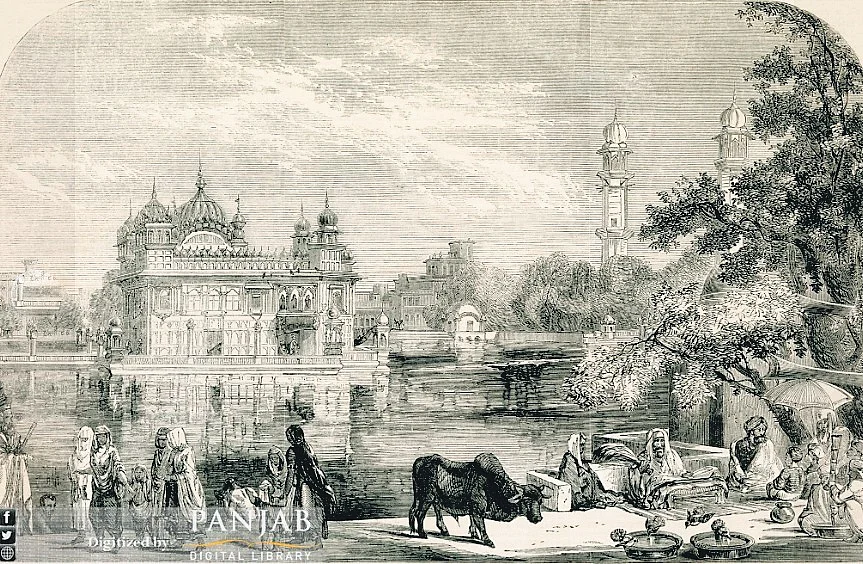A drawing of the Durbar Sahib in Amritsar by William Carpenter in 1840 shows the Golden Temple as a towering structure with minarets rising through tree tops beside the placid waters of the Amrit Sarovar which was built by Guru Ram Das. In the drawing, a bunch of women walk alongside the sarovar and a big black bull ambles towards two urns. A lithograph shows the temple in its intricately carved glory, and a boatman on a small canoe hopefully looking at a couple of turbanned Sikhs.
Amritsar then was an idyllic town, uncluttered by shoulder to shoulder shops selling jootis and temple merchandise, meshes of low lying electric lines and the clutter of a million pilgrims. The jewel in Punjab’s crown is without doubt the Golden Temple, the highest seat of Sikh faith. Like all Indian temple cities especially in the North, Amritsar is no longer the pastoral experience that inspired the fourth Guru.

It is a sprawling ugly urban mess whose chole kulcha is a fave trademark even as the 400-year-old city’s crumbling brick buildings, elaborate frescos, ornate doors and the colonial age Town Hall mourn a lost time. While on a heritage walk around the old bazars, one can visualise Guru Ramdass’ shopkeepers working hard to make a new city, then called Ramdaspur. In 1765, Jassa Singh Ahluwalia defeated Afghan invader Ahmad Shah Abdali in the Battle of Amritsar and established the Katra Ahluwalia, a self-sufficient, small neighbourhood.
“Such neighbourhoods were a common feature in the.























